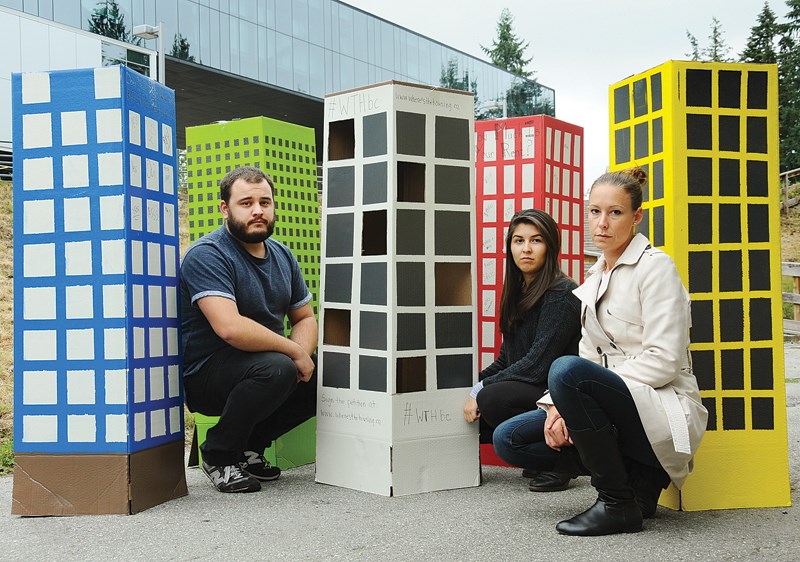Capilano University students are among a cohort pushing the province on a new solution that could ease the housing affordability crisis in the Lower Mainland.
The Alliance of British Columbia Students – a not-for-profit advocacy group of graduate and undergraduate student societies – launched a campaign Wednesday outlining how “minor changes” in government policy would allow the universities to begin building student housing on campus.
Under the University Act, schools may take on debt for capital projects but only with the approval of the finance minister. In practice, that simply does not happen because government accounting would show the school’s debt as provincial debt and the province has been unwilling to risk its credit rating.
But unlike debt serviced by taxpayers, the cost of building and maintaining new dorms would be paid for by the fee-paying students who live in them, all while offering below-market rents, the student alliance argues in its Where’s the Housing? study.
In its business case, the student alliance predicts, with a 10 per cent kickstart by the province, B.C. could get more than 20,000 new units of student housing over 10 years.
In Cap’s case, the advocacy group estimates the campus could hold 520 students in residence buildings at the north and south ends of the campus where parking lots currently sit.
That could make a substantial improvement in the lives of students struggling, said Capilano Students’ Union president Jullian Kolstee.
Kolstee said he’s met Cap students who live in their cars or couch surf with friends while trying to get an education.
“It’s at a point where we’re in crisis all across Metro Vancouver,” he said. “I know students that are paying well over $1,000 for accommodations, well north of 50 per cent of their income, 60, 70, maybe 80 per cent of their income.”
Vacancy rates are around 0.7 per cent on the North Shore, resulting in others having to commute in from Surrey and as far away as Chilliwack.
“If you’re only coming for one course, you’re probably spending more time on a bus or in traffic than you are in class,” he said.
Adding housing to Cap would give its campus an injection of life and encourage more business in the off-hours, both things the university needs more than parking spaces, Kolstee said.
“There is, I would say, much more parking than we need,” he said. “We’d gladly trade parking ability to have housing opportunities.”
The rest of the North Shore would benefit as well, Kolstee added, noting that it would mean fewer people wedged onto Highway 1 and the most crowded public transit routes. Roughly two thirds of Cap’s 5,200 students commute from the other side of Burrard Inlet.
And it would take significant numbers of renters out of competition for the cheapest units available on the market, Kolstee added.
“This issue extends beyond our campus and beyond the campuses of all post-secondary institutions across British Columbia. It extends to communities,” he said.
Advanced Education Minister Andrew Wilkinson responded to the campaign with a statement, acknowledging that rental markets are “very tight at the moment” but he did not indicate support for the students’ plan. Instead, he suggested private developers help fill the gap.
“The Ministry of Advanced Education is exploring the best way to increase the number of student residences. This includes looking at different financing vehicles to encourage and allow our universities to be part of the market housing phenomenon without the debt being placed into the provincial government books.”
No one from Cap U’s administration was available for an interview but acting president Rick Gale issued a statement in response to the campaign.
“Capilano University has been interested in student residences for some time. Housing is an important issue for our students and the barriers to on-campus housing are many. We remain committed to working with the students’ union to explore all possible solutions,” it read.

